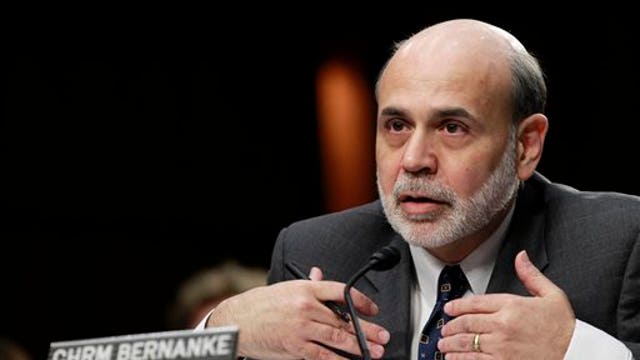Former Fed Chief Ben Bernanke Gets Personal ... Sort Of
As chair of the Federal Reserve from 2006 through 2014, one of the most turbulent periods in the history of American finance, Ben Bernanke made his living saying lots of important things while trying not to say too much.
You could learn a lot by listening to him, but probably not what you wanted to learn.
His new blog for the Brookings Institution, the first of which was published on Monday, is similarly an exercise in rhetorical balance.
Bernanke, long an academic before moving into public service in his role at the Fed, clearly wants to explain complicated economic theories without tipping his hand toward where he stands personally on the important issues of the moment -- most notably the Fed’s future policy on interest rates.
“The ability to shape market expectations of future policy through public statements is one of the most powerful tools the Fed has,” Bernanke writes in his inaugural blog. “The downside for policymakers, of course, is that the cost of sending the wrong message can be high.”
Bernanke Doesn’t Say
The former Fed chief takes pains in the blog post not to send any wrong messages.
Does he think the Fed should raise interest rates sooner rather than later? Bernanke doesn’t say.
Does he think the Fed should raise interest rates later rather than sooner? Bernanke doesn’t say.
Instead, in a blog titled “Why Are Interest Rates So Low” he offers an articulate defense of the Fed’s (and by extension, of course, his own) role in setting interest rates without providing anything in the way of his opinion toward where the Fed might be headed in the next few months and why.
In other words, he doesn’t offer much grist for anxious investors looking for some inside scoop on the Fed’s future moves.
His main thesis is that, despite widespread misconceptions, interest rates rise and fall based on the trajectory of a number of economic indicators – inflation, for instance -- rather than on the arbitrary whims of a handful of all-power central bankers.
“The Fed’s ability to affect real rates of return, especially longer-term real rates, is transitory and limited,” he writes. “Except in the short run, real interest rates are determined by a wide range of economic factors, including prospects for economic growth—not by the Fed.”
He then holds forth on the recent era of low interest rates: “Low interest rates are not a short-term aberration, but part of a long-term trend,” Bernanke explains. Since rising to a peak of more than 15% in the early 1980s as the Paul Volcker-led Fed made a concerted effort to fight runaway inflation, interest rates have been steadily falling to their current historic lows, the former Fed chair recalls.
Bernanke Gets Personal
Interestingly, Bernanke makes no mention in the blog that he was leading the Fed in December 2008 when the central bank made its historic move to lower interest rates to their current near zero-range of 0%-0.25% during the darkest days of the financial crisis.
Bernanke only gets personal when he specifically defends his Fed’s policies against charges made by politicians that seniors living off their savings were hurt by the low interest rates.
“I was concerned about those seniors as well,” he says, noting that it would have been more detrimental to seniors had rates had been raised too soon thereby setting off another chain reaction disastrous to the economic recovery.
“Ultimately, the best way to improve the returns attainable by savers was to do what the Fed actually did: Keep rates low … so that the economy could recover and more quickly reach the point of producing healthier investment returns,” he writes.
What the reader comes away with is similar to what watchers of Bernanke’s press conferences felt: A bit of clarity on how and why the Fed does things, but no clearer on how those policies might play out in the near future. That’s hardly an accident.




















